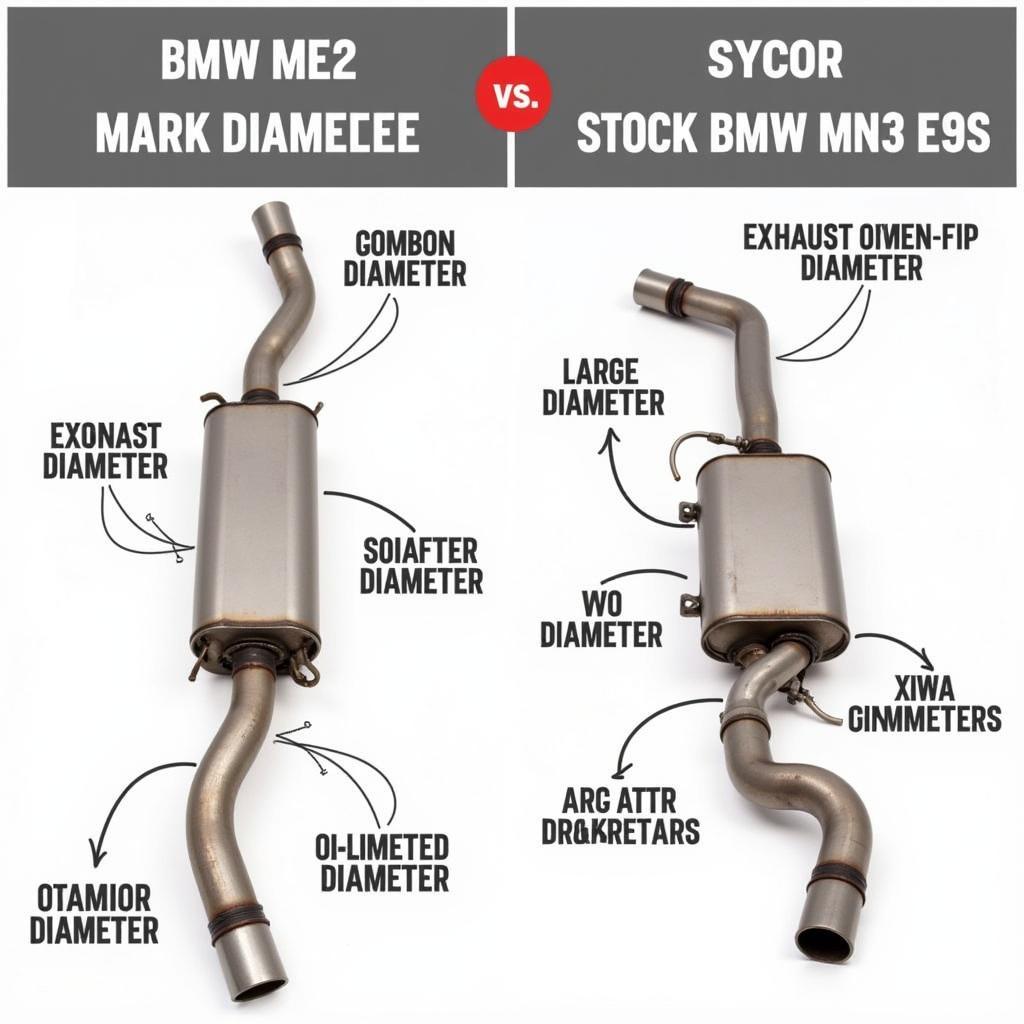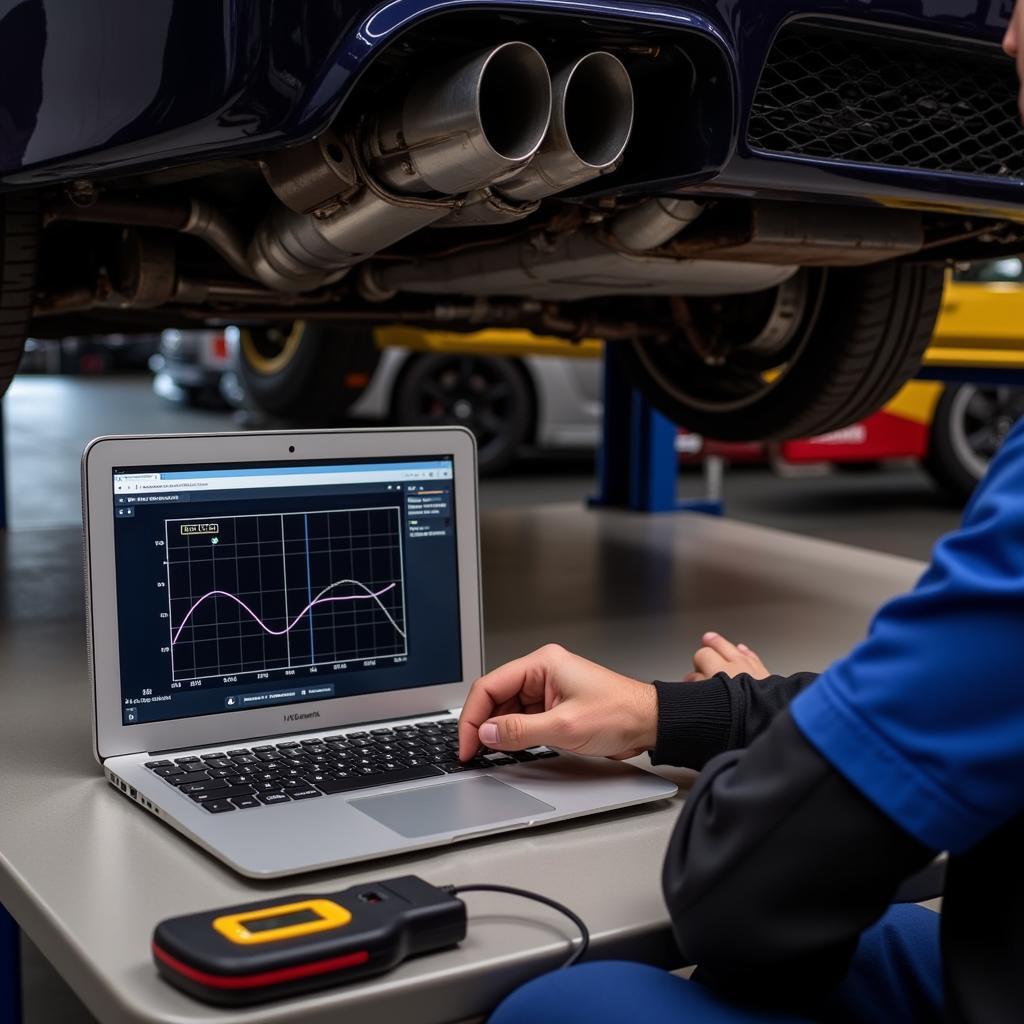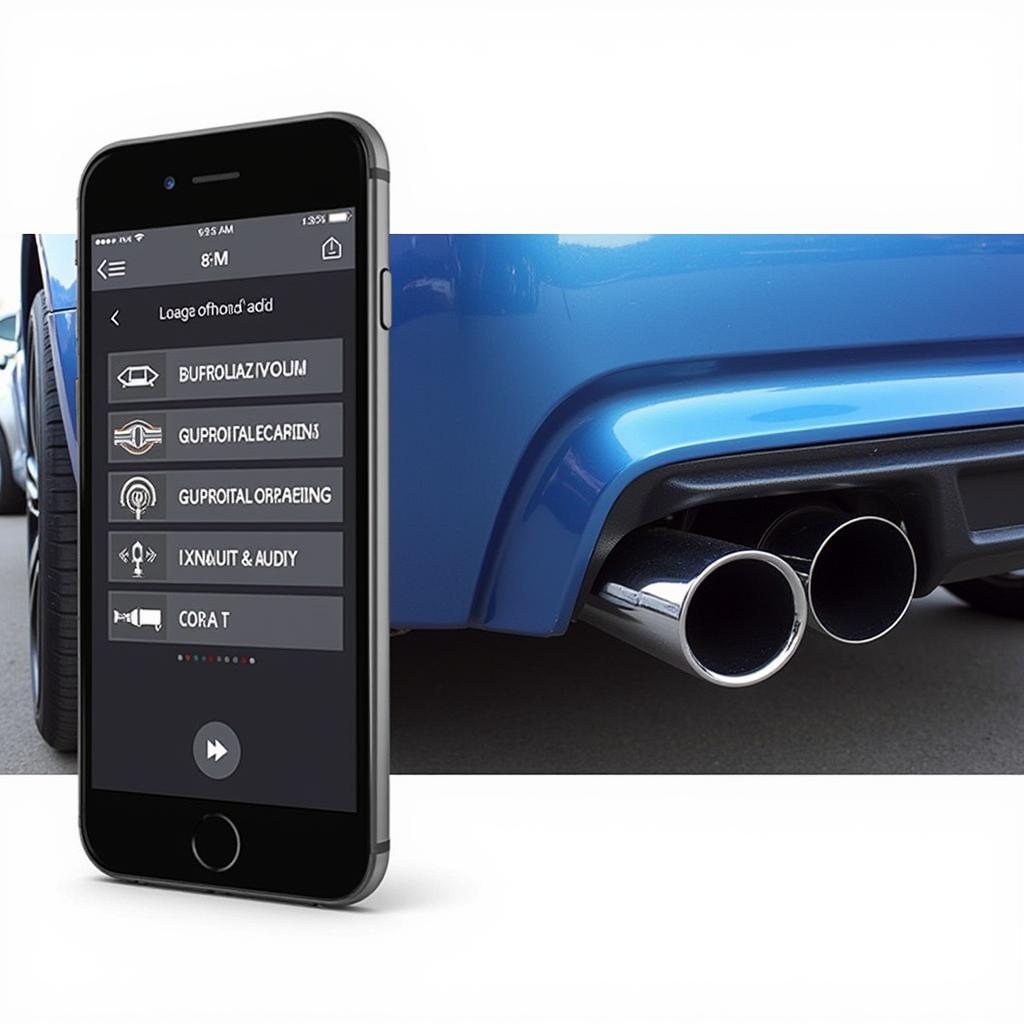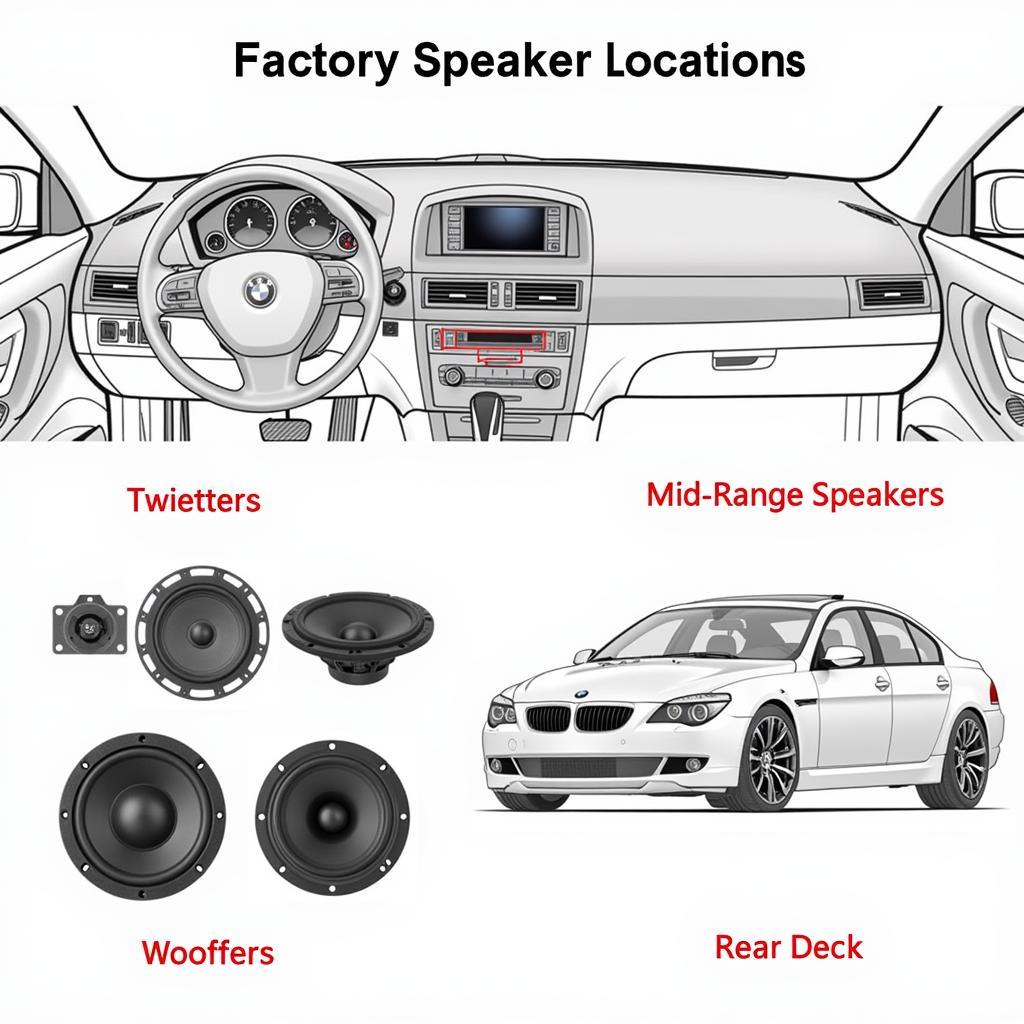The BMW M3 E92 is renowned for its aggressive styling and exhilarating performance. A key component of that experience is the sound of its exhaust, a symphony of power that resonates with driving enthusiasts. This article will delve into the world of the BMW M3 E92 sound exhaust, covering everything from stock configurations to aftermarket modifications. We’ll explore the factors that influence exhaust sound, common issues, and how remote diagnostics and software solutions can help optimize your M3’s auditory character. Learn more about the powerful 2010 BMW M3 sound in one of our related articles.
The Science of Sound: How the BMW M3 E92 Exhaust Works
The exhaust system on the BMW M3 E92 is more than just a pipe; it’s a precisely engineered system designed to manage exhaust gases, reduce emissions, and contribute to the car’s unique sound signature. The exhaust note is a product of several factors, including the engine’s firing order, the exhaust manifold design, the size and shape of the catalytic converters, the length and diameter of the exhaust pipes, and the design of the muffler.
Stock vs. Aftermarket: Choosing the Right BMW M3 E92 Sound Exhaust
The stock exhaust system on the BMW M3 E92 delivers a refined, sporty sound. However, many owners seek a more aggressive and pronounced exhaust note. This leads them to explore the world of aftermarket exhaust systems. Aftermarket exhausts offer a variety of options, from axle-back systems that replace just the muffler and tailpipes to full cat-back systems that replace the entire exhaust system from the catalytic converters back.
 BMW M3 E92 Exhaust System Comparison: Stock vs. Aftermarket
BMW M3 E92 Exhaust System Comparison: Stock vs. Aftermarket
Each aftermarket system has its own unique sound characteristics, from deep and throaty to high-pitched and screaming. Choosing the right exhaust depends on your personal preferences and desired sound profile. Are you looking for a subtle enhancement or a dramatic transformation? Consider the material of the exhaust system as well. Stainless steel is a popular choice for its durability and corrosion resistance, while titanium offers a lighter weight option but comes at a premium price.
Common Issues with BMW M3 E92 Exhaust Systems
Like any mechanical component, the exhaust system on the BMW M3 E92 can experience issues. Common problems include exhaust leaks, which can cause a loss of power and increased noise, and damaged or worn-out mufflers, which can lead to excessive noise and decreased performance.
Diagnosing and Fixing Exhaust Problems
Diagnosing exhaust problems often involves a visual inspection, listening for unusual noises, and using specialized equipment to detect leaks. Modern diagnostic tools can even identify issues remotely, allowing technicians to pinpoint the problem area quickly and efficiently. Software solutions can also be utilized to optimize exhaust performance and tailor the sound to the driver’s preferences. For example, some aftermarket exhaust systems come with software that allows you to adjust the exhaust valve settings, changing the sound from a quiet purr to a roaring growl.
 BMW M3 E92 Exhaust Leak Detection using Diagnostic Tools
BMW M3 E92 Exhaust Leak Detection using Diagnostic Tools
You can explore more about the distinct BMW M3 engine sound in another article on our website.
Maximizing Your M3 E92’s Sound Potential
Getting the perfect BMW M3 E92 sound exhaust is a journey of exploration. It involves understanding the science behind the sound, researching different options, and considering your personal preferences. With the right combination of components and tuning, you can unlock the full auditory potential of your M3 E92.
What exhaust systems are available for the BMW M3 E92?
There is a wide array of both axle-back and cat-back exhaust systems available, catering to various sound preferences and budgets.
Can I adjust the sound of my BMW M3 E92 exhaust?
Yes, certain aftermarket exhausts come equipped with adjustable valves, allowing you to customize the sound output. Some can even be controlled remotely via software.
 BMW M3 E92 Adjustable Exhaust Valve Control via Software
BMW M3 E92 Adjustable Exhaust Valve Control via Software
Conclusion: The Perfect BMW M3 E92 Sound Awaits
Whether you prefer the refined tone of the stock exhaust or the aggressive roar of an aftermarket system, the BMW M3 E92 offers a captivating auditory experience. By understanding the factors that contribute to exhaust sound and utilizing the latest diagnostic and programming technology, you can achieve the perfect symphony of power for your M3 E92 sound exhaust.
FAQ
- What affects the sound of my BMW M3 E92 exhaust? Factors like engine firing order, exhaust manifold design, and muffler design influence the exhaust note.
- What’s the difference between axle-back and cat-back exhaust systems? Axle-back replaces the muffler and tailpipes, while cat-back replaces the entire system from the catalytic converters back.
- Can remote diagnostics help with exhaust issues? Yes, they can pinpoint problems like leaks efficiently.
- How can I make my M3 E92 exhaust louder? Aftermarket exhaust systems and exhaust valve adjustments can increase the sound output.
- Are there different materials for exhaust systems? Yes, stainless steel and titanium are common choices.
- What are some common BMW M3 E92 exhaust problems? Leaks and worn-out mufflers are frequently encountered issues.
- Can software enhance my M3 E92 exhaust sound? Yes, some systems offer software for adjusting valve settings and customizing the sound.
For further information about the sound characteristics of the 2010 BMW M3, check out our dedicated article: 2010 bmw m3 sound. You can also explore more about the general BMW M3 engine sound here: bmw m3 engine sound.
Need help with your BMW M3 E92 exhaust? Contact us via Whatsapp: +1 (641) 206-8880, Email: [email protected] or visit us at 276 Reock St, City of Orange, NJ 07050, United States. Our 24/7 customer service team is ready to assist you.


